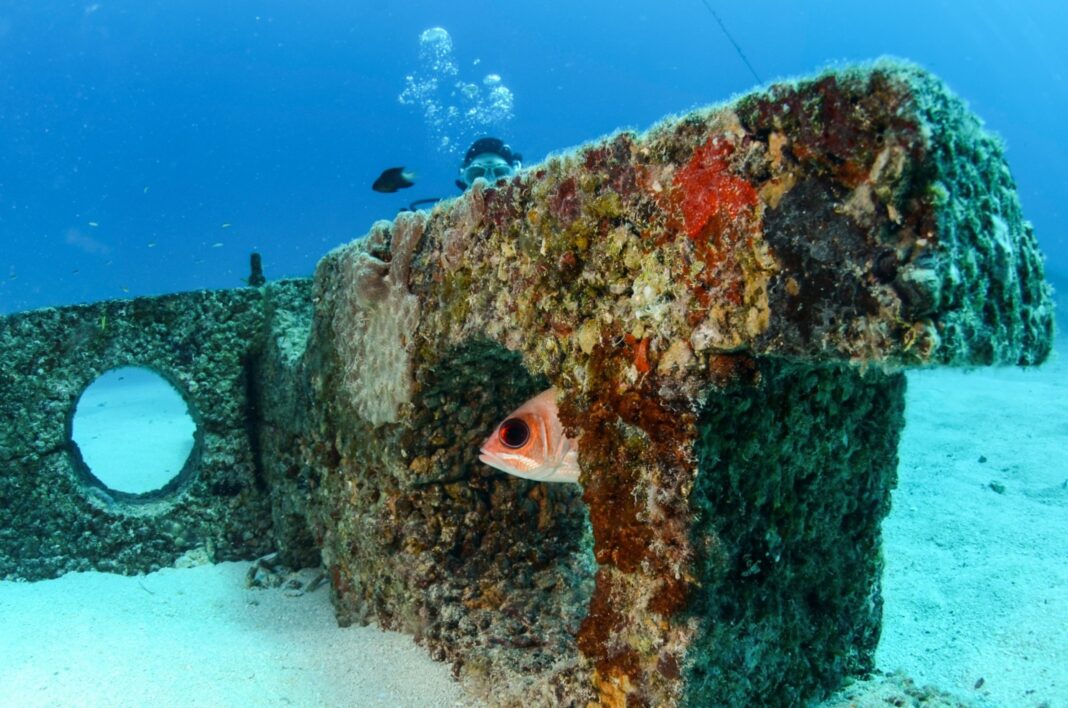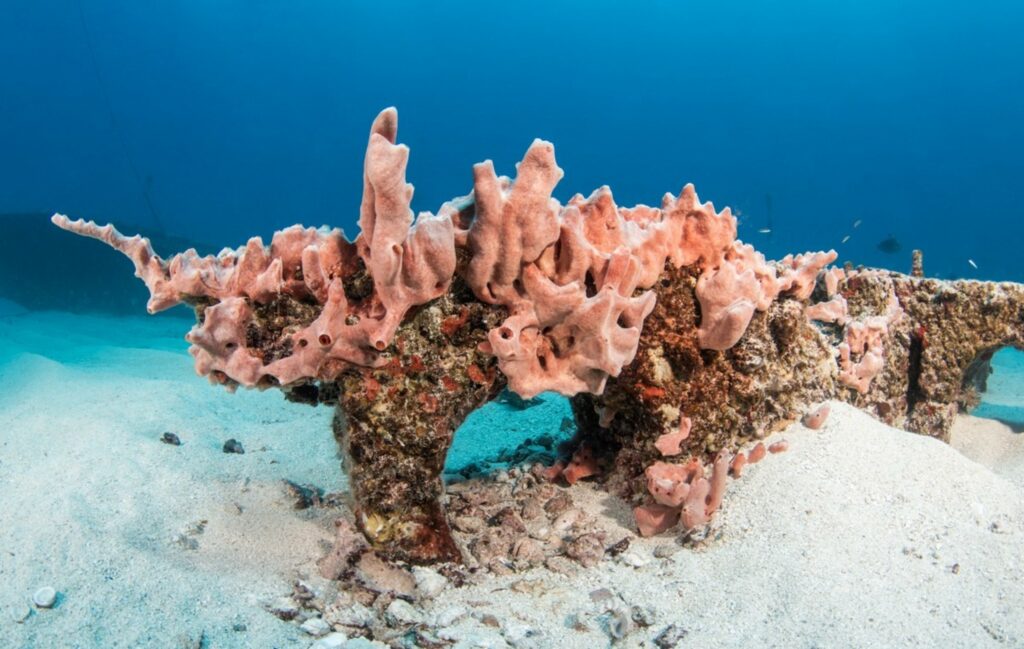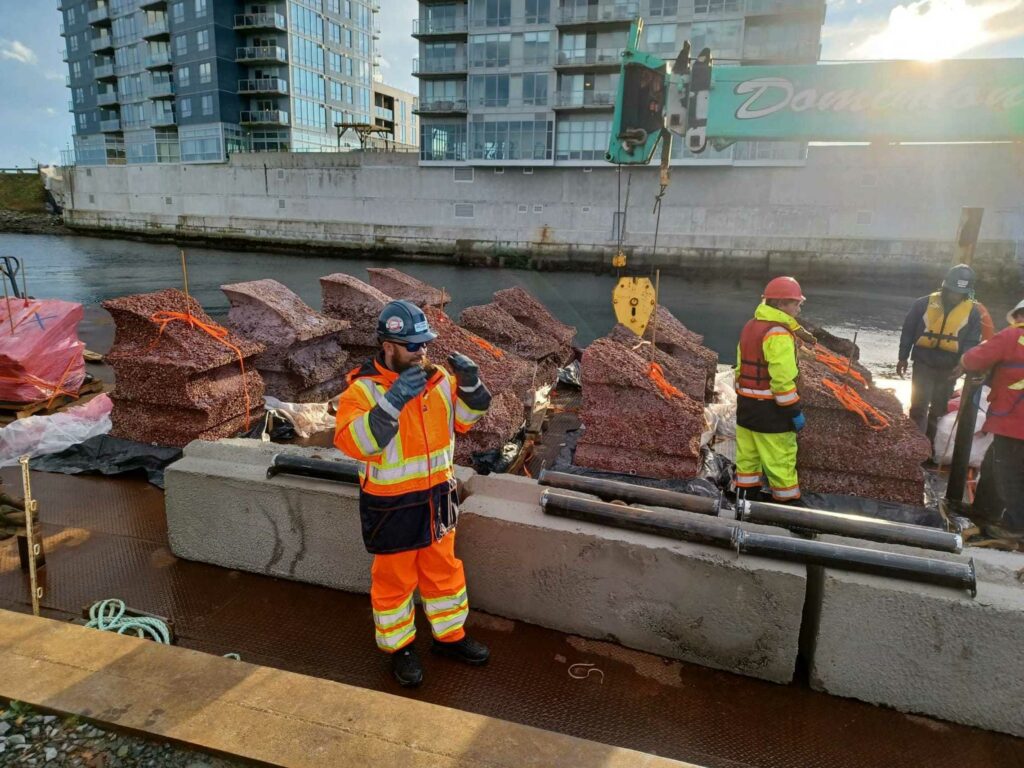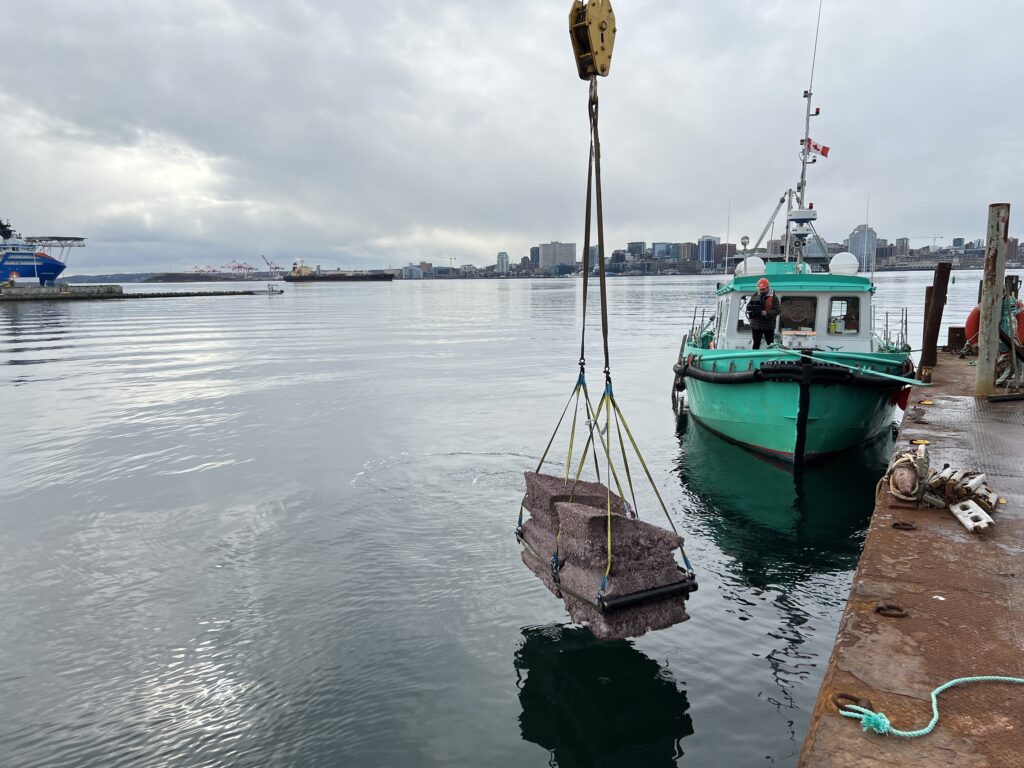A new type of underwater concrete provides a home for kelp and coral.
A barge-shaped structure called a “ReefShip” on the bottom of Halifax Harbor could be the key to regrowing Nova Scotia’s declining kelp forests — and play a role in saving the world’s endangered coral reefs. The structure is made of Oceanite, a revolutionary new concrete designed to encourage the growth of sealife.
“There’s crabs all over it!” says Melody Brenna of the 404-square-foot ReefShip, built in 2021. “You can see a thousand little fish swirling around it.” Brenna is the CEO and cofounder of IntelliReefs, the American foundation experimenting with this new concrete. When the company analyzed the sea life around the ReefShip, DNA markers indicated larger numbers of certain species when compared to nearby control sites. Even before baby kelp took hold, the ReefShip attracted twice as many small fish called gunnel. Spionida, an ocean worm, appeared a dozen times more often.
The material’s pH is much lower than that of conventional concrete, which usually prevents the growth of sealife. When Oceanite is being mixed, its components bind in ways that strengthen the material while retaining a porous structure, making it an ideal material for kelp zygotes, coral larvae, and other sea youngsters to attach to and grow. Linkable modules that resemble Lego blocks are built in customizable shapes that sealife favors. (Both coral and kelp, for example, prefer surfaces sloped at forty-five degrees or more.) Blocks of Oceanite are deployed alone or in complex structures that provide footholds and hiding places. Fish raceways are created by aligning the blocks.
As the Halifax tests continue, IntelliReefs is also testing the material in warmer waters off of Sint Maarten in the Caribbean. Brenna says that just over a year after the blocks were deployed, “The entire interior was calcinated by corals. It just became a part of the ocean floor, which is the whole point.” Wild plants and corals colonized every inch of the surface.
Nova Scotia’s kelp forests and the Caribbean’s coral reefs play similarly vital roles: both serve as nurseries for many other species while buffering vulnerable coastlines from wave action.
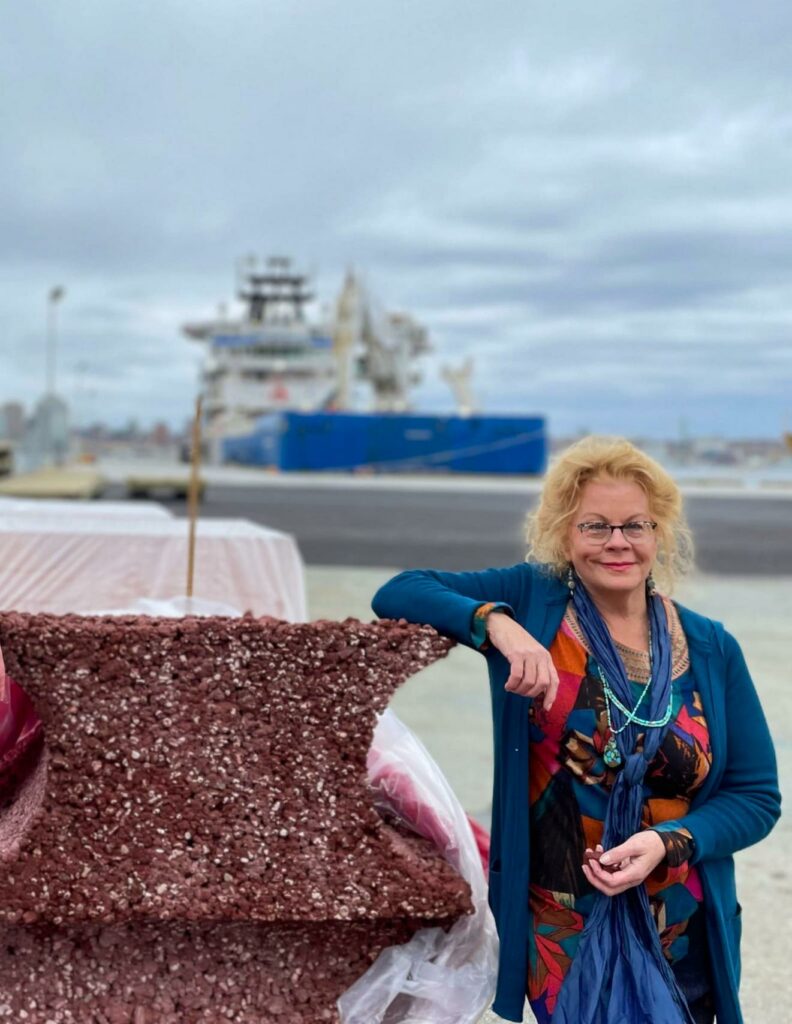
The company is working in other regions as well, opening an office in the Netherlands and searching for a test site in British Columbia. In Panama, it has plans to establish an artificial coral reef for research and ecotourism purposes. Given the enormous potential for creating wind farms in shallow ocean waters, the company has developed a template for building windmill bases made of Oceanite. Brenna believes that windmills and other structures with underwater components such as wharves and bridges could become ocean gardens, teeming with sea life.

IntelliReefs is just getting off the ground and is still working toward its first major project, but as Oceanite proves itself at various test sites, there is hope that it can play an increasingly large part in regrowing kelp forests and coral reefs around the world.


